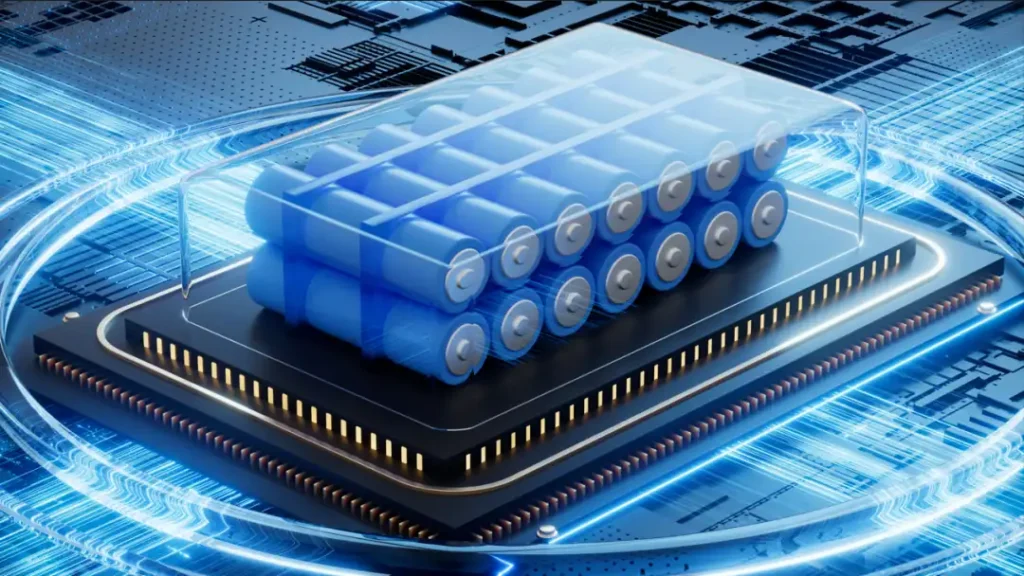Magnesium hydroxide (Mg(OH)₂) possesses a variety of potential applications in energy storage systems, primarily owing to its unique physical and chemical properties. Below are some possible application directions:

I. Battery Materials
A. Lithium-ion Batteries
- Cathode Material Additive: The addition of magnesium hydroxide to cathode materials in lithium-ion batteries can enhance their structural stability. For instance, in common lithium cobalt oxide (LiCoO₂) cathode materials, crystal structure changes during charge and discharge cycles often lead to capacity degradation. Magnesium hydroxide can embed itself into the crystal lattice of the cathode material, providing support to inhibit crystal structure collapse, thereby improving the battery’s cycle life.
- Separator Coating Material: Magnesium hydroxide can be coated onto the separator of lithium-ion batteries. The primary function of the separator during battery operation is to prevent short-circuiting between the anode and cathode. A magnesium hydroxide coating can improve the thermal stability of the separator. When the internal temperature of the battery becomes excessively high, magnesium hydroxide can absorb heat, slowing down the melting of the separator and preventing safety issues like thermal runaway caused by short circuits.
B. Nickel-Metal Hydride (Ni-MH) Batteries
- Electrode Material Modifier: Incorporating magnesium hydroxide into the electrode materials of Ni-MH batteries can increase the utilization rate of active electrode substances. Taking nickel electrodes as an example, magnesium hydroxide can enlarge the effective surface area of the nickel electrode, allowing more nickel elements to participate in electrochemical reactions, thereby improving the battery’s charge acceptance and discharge capacity. Simultaneously, magnesium hydroxide can enhance the corrosion resistance of the electrode, reducing the dissolution and detachment of electrode materials during charge and discharge cycles.
II. Supercapacitors
A. Electrode Active Materials
- Electrode Active Material: Magnesium hydroxide can serve as one of the active electrode materials for supercapacitors. It exhibits excellent pseudocapacitive properties, meaning it stores charge through rapid surface redox reactions. In the electrode structure of supercapacitors, magnesium hydroxide nanoparticles can provide a large number of active sites, enabling rapid adsorption and desorption of electrolyte ions, thereby achieving high-power energy storage. For example, in supercapacitors utilizing potassium hydroxide (KOH) as the electrolyte, magnesium hydroxide electrodes can demonstrate good capacitive behavior at high scan rates, effectively enhancing the supercapacitor’s fast charge and discharge capabilities.
- Composite Electrode Materials: Magnesium hydroxide can be combined with other highly conductive materials (such as graphene, carbon nanotubes, etc.) to prepare supercapacitor electrodes. Such composite electrodes can leverage the high specific capacitance of magnesium hydroxide and the excellent electron transport properties of conductive materials. For instance, in magnesium hydroxide/graphene composite electrodes, the graphene network can provide fast electron pathways for magnesium hydroxide, facilitating charge transfer during charge and discharge, while magnesium hydroxide, in turn, stores charge through its abundant active sites, significantly boosting the overall performance of the supercapacitor.
III. Fuel Cells
A. Catalyst Support
- Catalyst Support: In fuel cells, magnesium hydroxide can act as a catalyst support. For example, in Proton Exchange Membrane Fuel Cells (PEMFCs), platinum (Pt) or other noble metal catalysts can be loaded onto magnesium hydroxide. Magnesium hydroxide possesses a high specific surface area, providing a favorable dispersion environment for the catalyst and increasing the contact area between the catalyst and reactant gases. Furthermore, magnesium hydroxide can interact with the catalyst, modulating its electronic structure, lowering the activation energy of catalytic reactions, and enhancing the reaction efficiency of the fuel cell.
B. Separator Material
- Separator Material: Similar to its application in lithium-ion batteries, magnesium hydroxide can also be used as a separator material in fuel cells. In proton exchange membrane fuel cells, a magnesium hydroxide separator can prevent direct mixing between the fuel (e.g., hydrogen) and the oxidant (e.g., oxygen) while allowing rapid proton conduction. Its excellent chemical and thermal stability can maintain the performance of the separator in the complex operating environment of fuel cells, ensuring the safe and efficient operation of the fuel cell.
